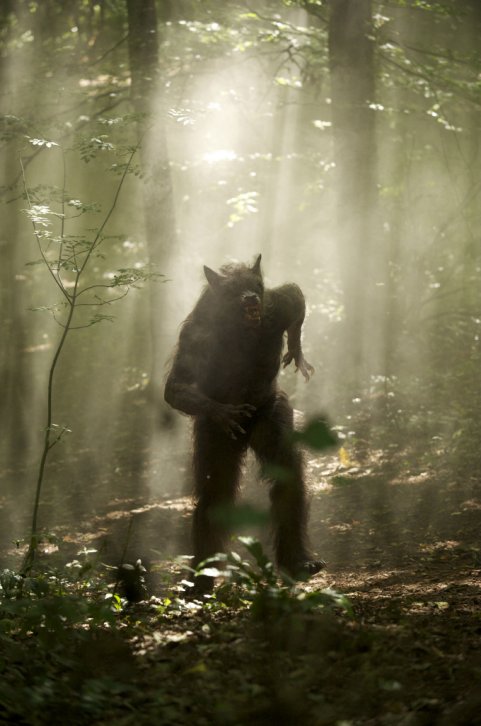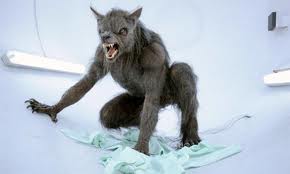
During middle ages, especially from 15th to 17th century, Europe was under the dark shadow of ignorance and superstitions. Towns were underdeveloped and people lived near woods. The fear of wolves was like a nightmare. Their attacks were so frequent and atrocious in nature that people even feared to travel from one place to another. Every morning, countryside people would find half-eaten human limbs scattered on their fields.
The first recorded Werewolf sighting took place around the countryside of German town Colongne and Bedburg in 1591. An age-old pamphlet describes those shivering moments vividly. Few people cornered a large wolf and set their dogs upon it. They started to pierce it with sharp sticks and spears. Surprisingly the ferocious wolf did not run away or tried to protect itself, rather it stood up and turned out to be a middle-aged man he was Peter Stubbe from the same village.
Stubbe was put on a torture wheel where he confessed sixteen murders including two pregnant women and thirteen children. The history behind his downfall was rather bizarre. He had started to practice sorcery when he was only 12 and was so obsessed with it that even tried to make a pact with the Devil. Wearing a magic girdle he started to attack his enemies, real or imaginary. After several months, he would take the guise of a wolf and continued with his evil acts with more brutality. In the wolf form he used to tear up victims’ throats and suck warm blood from veins. Gradually his thirst for blood grew and he roamed around fields in search of prey.

The savagery of his crimes was beyond imagination. The trial record motioned few of them. Once two men and a woman were walking along a road that went through the forest Stubbe used to hide in. He called one of them into the forest. When the man did not return for a long time the second one followed his trail and also disappeared into the forest. When both the man didn’t return for a long time the woman ran for her life. Later, two mangled male corpses were recovered from the forest, but the woman’s body never reappeared. It was believed that Stubbe had devoured it all. Young girls playing together or milking the cows in the fields were his frequent victims. He used to chase them like a hound, catch the slowest one, rape and kill her. Then he would drink hot blood and eat tender flesh from her body. However; the most gruesome sin he committed was upon his own son. He took him to a nearby forest, cracked the poor child’s skull open and ate brain from it.
No punishment could match the magnitude of Stubbe’s crime. His flesh was pulled off with red-hot pincer, his arms and legs were broken and he was finally decapitated. His carcass was burned to ashes.
The Magistrate of Bedburg built a grim monument remembering the ghastly incident. Workmen put the torture wheel atop a tall pole with Stubbe’s head above it structured with the likeliness of a wolf. Sixteen pieces of yard long wood cuts were hung from the rim of the wheel commemorating poor souls of the victims. The words of Stubbe’s trial and execution spread across the lands in no time. His brutality, atrocity and savagery were beyond human comprehension and was readily related with the behavior of a wolf. People started to believe that such individuals with the shadow of wolves were living among them. They named them Werewolves.
REAL WEREWOLFS ?
There are many individuals today who believe they are werewolves, and some of the lycanthropes have been studied and treated by psychologists and psychiatrists. The November 1975 issues of The Canadian Psychiatric Association Journal reported in details on several recent cases of lycanthropy.
In the first case, the twenty-year-old patient, referred to as Mr. H, was convinced that he was a werewolf. A drug user, he told his doctor that while serving in the United States Army in Europe, he had hiked into a forest near his post and had ingested LSD and strychnine, the latter a deadly poison that acts as a stimulant when taken in tiny quantities. Both substances are pharmacologically similar to some of the ingredient used by shape shifters in the past. They had an instant and potent effect on the young man, who claimed to have seen fur growing on his hands and felt it sprouting on his face. Soon he was overcome by a compulsion to chase after, catch, and devour live rabbits. He wandered in this delusional state for several days before returning to the post.
Placed on the tranquilizer chlorpromazine, Mr. H was weaned away from drugs and received adjunct therapy for some nine months, during which time he continued to hear disembodied voices and to experience satanic visions. Claiming to be possessed by the devil, he insisted he had unusual powers. Tests indicated his delusions were “compatible with acute schizophrenic or toxic psychosis” He was treated with an antipsychotic drug, and when he improved sufficiently, he was referred to an outpatient clinic. After only two visits, however, he had stopped taking the medication and left treatment. Subsequent efforts to contact him failed.
Another werewolf patient, thirty-seven-year-old Mr. W was admitted to the hospital after repeated pubic displays of bizarre activity, including howling at the moon, sleeping in cemeteries, allowing his hair and beard to grow out, and lying in the center of busy highways. Unlike Mr. H, Mr. W had no history of drug or alcohol abuse. He had once been a farmer and considered of average intelligence, which was found in an IQ test administered when he served in the United States Navy. Now, he was seen not only as psychotic but also as intellectually deficient, with a mental age of an eight-to ten year-old child.
Because of the patient’s increasing dementia, the doctors performed a brain biopsy. Their findings revealed an abnormal physiological deterioration of cerebral tissue, known as walnut brain. Mr. W was diagnosed as having a chronic brain syndrome of unknown origin. When placed on antipsychotic drugs, he showed no further symptoms of lycanthropy. Seen later on an outpatient basis, he exhibited quiet, childlike behavior.

The October 1977 issue of The American Journal of Psychiatry details the particularly bizarre story of a forty-nine year-old woman who believed herself a wolf and, with increasing frequency, had begun acting like one. She revealed that just below the surface of a seemingly normal twenty-year marriage she had harbored a consuming desire to indulge in secret, bestial appetites. Her erotic daydreams often involved other women in polymorphous perverse orgies. The wolf was a constant and central figure in her fantasies; she felt its mesmerizing stare fastened onto her by day, its hot breath on her bare neck at night. Soon she began “feeling like an animal with claws.” For her, the message was clear-she was a wolf.
After a time, she began to act out her compulsions. At a family gathering, for instance, she was suddenly overwhelmed by the wolf passion. Stripping naked and dropping to all fours she excitedly approached her own mother, and assuming the sexual posture of a female wolf, she offered herself. The woman’s state continued to deteriorate; the next evening, after making love to her husband, she lapsed into a frenetic two-hour episode of grunting and of clawing and gnawing at the bed. She explained afterwards that the devil “come into her body and she became an animal.”
Enrolled in an inpatient program, she received daily psychotherapy and was placed on medication. In the first three weeks she suffered relapses, during which she would rave: “I am a wolf of the night, I am wolf woman of the day……. I have claws, teeth, fangs, hair………and anguish is my prey at night………powerless is my cause. I am what I am and will always roam the earth after death……….I will continue to search for perfection and salvation.” Concurrently she experienced the urge to kill accompanied by a consuming sexual excitement.
She now saw the head of a wolf, rather that her own face, when she gazed in the mirror. The medical staff commented on “the unintelligible, animal-like noises she made.” There was some improvement, but the patient then relapsed during the full moon Writing about her experience, she stated: “I don’t intend to give up the search for (what) I lack……….in my present marriage……..my search for such a hairy creature. I will haunt the graveyards for a tall, dark man that that I intend to find.” After nine weeks of treatment, she was released from the hospital on a regimen of drugs designed to free her of her delusion.
On the basis of the woman’s symptoms, her doctors were able to formulate a psychological profile of the lycanthrope, which is not so different, in spite of its modern medical language, from the conclusion of some of the more enlightened physicians and thinkers of earlier times.













